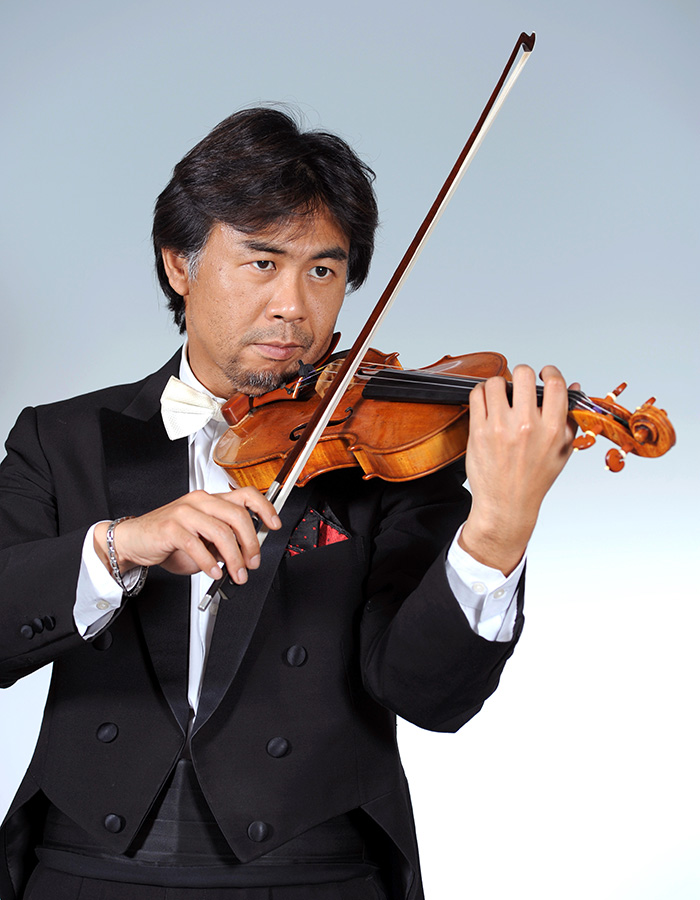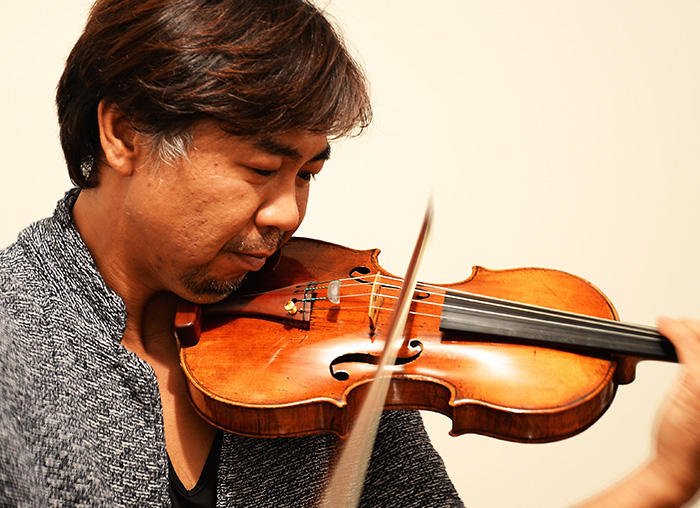|

|

Giovanni Battista Guadagnini (1711-1786) was born in Cremona and started learning his violin making from his father. He soon acquired his own style and was greatly supported by aristocrats and musicians. He was not based in one place, moving from one place to another, and his violin making differed greatly depending on the place where he was living at the time.
Guadagnini's earlier works made in Piacenza in the 1940s have unique characteristics of sloping shoulders with an outline of a pear, f-holes facing outward with long eyes, and lowered back of the scroll. Most of his works then had red varnish and he very much had his original artistic style.
In 1749, Guadagnini moved to Milan and started to research through musicians the likes of the Ferrari brothers. With the colour of his varnish becoming more translucent red and golden orange and the style maturing with richness, his works were already comparable with Grancino and Testore, who were already successful in Milan. Some refer to this period as Guadagnini's Golden Period when his works showed originality.
At the age of 48, a great opportunity came his way when Prince of Parma appointed Guadagnini as his personal violin maker. Guadagnini's works during this period in Parma were very unique, having slightly higher arching and thinner C bouts with f-foles placed inwards.
The varnish became less translucent and more golden brown, which was probably preferred by Prince of Parma and his friends at the time. During this time, his works bore the label "CSR", short for Celsitude Serenisima Realis ('His Serene Royal Highness').
When Prince of Parma passed away, Guadagnini moved to Turin in 1771, where he had a fateful encounter with the famous and historical collector Count Cozio di Salabue, who was to become his patron. This brought him the chance to get acquainted with the Count's fine collection, which included Antonio Stradivari's work and Stradivari's violin mould. Using this mould, he adopted a similar outline of Stradivari's model from his Golden Period with wider upper bouts, differing from Guadagnini's narrow upper bouts and pear shaped outline. He also started to blacken the scroll's chamfer with ink like many fine Cremonese makers at the time, broaden the eyes of the f-holes like Stradivari and use deeper but brighter reddish brown varnish. Due to these changes, Guadagnini's works during this period became popular amongst the virtuosos.
All of Guadagnini's works made after 1775 in Turin, which became his final destination, included the text "Alumnus Antonii Stradivarii" to his labels with no mention of Count Cozio di Salabue. This, however, did not suggest that Guadagnini worked under Stradivari, but was his way of showing his respect to Stradivari, whom he could not surpass even after years of career and research.
This work that we are introducing here was made in Parma in 1767, most probably for one of Prince of Parma's musicians. It shows strong characteristics of Guadagnini's works during this period, is in fine condition and has the ideal combination of tonal quality and great projection. This is being played by Ogitani Yasutomo today.
| |

| | | | | | |  Yasutomo Ougitani Violinist Yasutomo Ougitani Violinist

Yasutomo Ougitani started studying music at the Royal Conservatory of Brussels in 1998 and completed his studies in 2000 after studying at Toho Gakuen Music High School (co-educational) and in the Music Department of Toho Gakuen College. While at Toho Gakuen College, he won a prize in the 62nd Music Competition of Japan.
Mr. Ougitani served as concertmaster for the Royal Chamber Orchestra, where he was also a soloist. During his time in Brussels, he established a chamber orchestra at the Royal Conservatory of Brussels and led successful concert tours in Germany in 2000 and in Japan in 2002 as concertmaster.
In the field of chamber music, he formed the Crystal Quartet. As a violist, he won the Paper de Música international competition in Spain in 2001, and has performed in Belgium, Spain, and elsewhere. Mr. Ougitani returned to Japan in 2002, and assumed the post of concertmaster for the Kyushu Symphony Orchestra in July 2004. Since April 2006, he has also been serving as solo concertmaster for the Japan Philharmonic Orchestra, making him solo concertmaster for both orchestras.
Aside from that, he performs in the Miyazaki Music Festivals, the JT Art Hall Chamber Music Series, the Saito Kinen Festivals, and others.
Mr. Ougitani has studied under Hidetaka Murayama, Masami Tomioka, Yukari Fukushima, Tsugio Tokunaga, and Igor Oistrakh.
| | | | | | | |
| |
|

|
|
|

